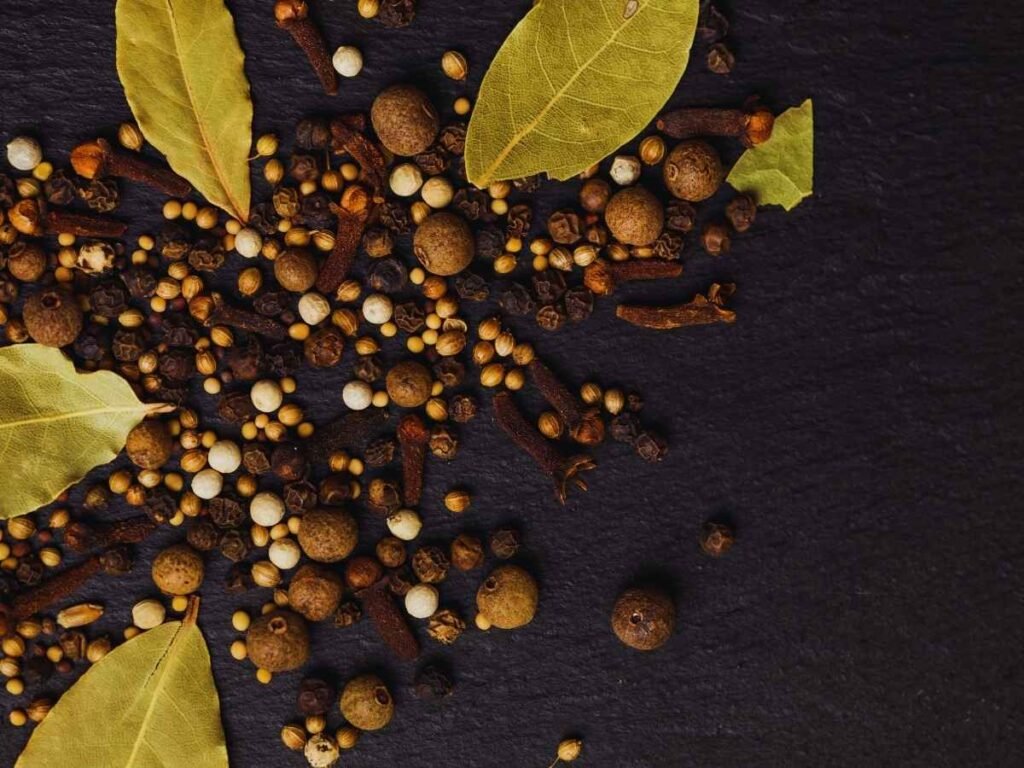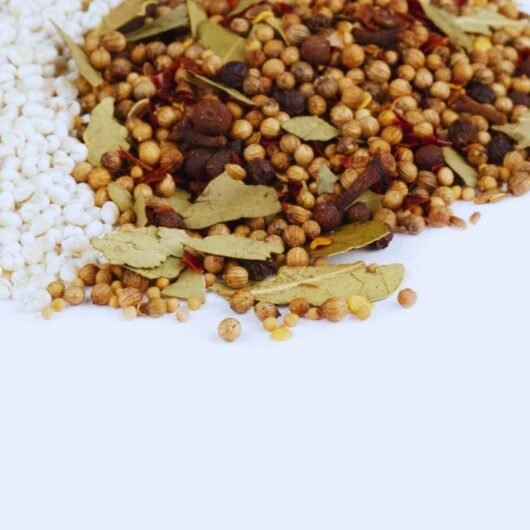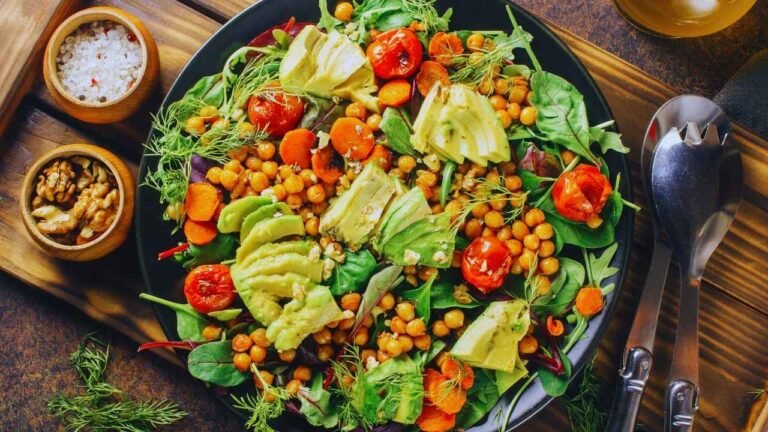How to Create the Perfect Pickling Spice Recipe at Home
Making your own pickling spice blend puts you in control of your preserved foods’ flavors. Store-bought mixes often contain fillers or old spices that affect your pickled vegetables’ taste. You can adjust the blend to match your priorities and ensure everything stays fresh when you make it at home.
This piece shows you how to create the perfect homemade pickling spice blend by breaking down the core ingredients. You’ll discover the main spices, aromatic additions and flavor boosters that work together. The guide also covers storage methods and ways to use your blend effectively. Plus, you’ll learn how to tailor your mix for different vegetables and preservation techniques.
Essential Ingredients for Pickling Spice

Making successful homemade pickling spice starts with knowing everything in ingredients that create a perfect balance of flavors. Each ingredient plays a significant part in building complex taste profiles that make pickled foods appealing to everyone.
Core spices: Mustard seeds, peppercorns, and bay leaves
Three fundamental ingredients form the backbone of any pickling spice recipe. Mustard seeds come in yellow and black varieties and provide a subtle heat and distinctive texture to pickled vegetables. Black peppercorns, especially the tellicherry variety, add a bright, almost sweet flavor with their characteristic peppery kick. Bay leaves is a vital balancing element that goes together with bolder spices while adding an aromatic, slightly bitter note.
Aromatic additions: Coriander, dill seeds, and allspice
Aromatic components raise a simple pickling blend to new heights. Coriander seeds deliver a warm, mild citrus note that’s substantially more subtle than their fresh counterpart. Dill seeds provide the fresh, herbal taste needed in traditional dill pickles. Allspice berries bring a unique warm flavor that combines notes of cloves, cinnamon, and nutmeg.
Heat elements: Red pepper flakes and ginger
The perfect level of warmth comes from red pepper flakes that slowly infuse their heat into the brine. These flakes may lack intense flavor independently but create a subtle warmth that intensifies gradually. Ground ginger brings a spicy-sweet warmth and complements other spices while adding depth to the blend.
Optional flavor boosters: Cinnamon, cloves, and cardamom
Anyone looking to create a complex pickling spice recipe can add these interesting dimensions:
- Cinnamon sticks – Provide a sweet warmth
- Whole cloves – Add a strong aromatic quality
- Cardamom pods – Contribute an exotic, sweet note
- Juniper berries – Offer a pine-like freshness
- Star anise – Bring a distinctive licorice flavor
Fresh spices will give the truest flavor and color to your pickled products. Toasting whole spices before adding them to the brine can boost their earthy, nutty flavors. The typical ratio is 2-3 tablespoons of mixed pickling spice per quart jar of vegetables, but this can vary based on your taste and the vegetables you pickle.
Crafting Your Custom Pickling Spice Blend

A perfect pickling spice blend demands careful attention and deep knowledge of flavor combinations. The individual ingredients matter, but the true artistry emerges from their precise combination and preparation methods.
Balancing flavors and ratios
A soaring win in pickling depends on striking the perfect balance between sweet, spicy, and aromatic elements. The standard batch calls for 2-4 tablespoons of mixed spice per 4 cups of liquid. The liquid mixture works best with a 3:1 ratio of vinegar to water.
To name just one example, see these proportions for creating your own blend:
- Base spices (mustard seeds, peppercorns): 40% of blend
- Aromatic elements (coriander, dill): 30% of blend
- Heat components (pepper flakes, ginger): 20% of blend
- Optional flavor boosters (cinnamon, cloves): 10% of blend
Grinding vs. keeping spices whole
Whole spices are strongly preferred over ground versions to pickle foods. Ground spices make the mixture look muddy and fail to deliver the clean, pronounced flavors that whole spices provide. Powdered ginger stands as the only exception to this rule.
Large spices like bay leaves or cinnamon sticks need breaking into smaller pieces. This helps them fit better in measuring spoons and will give more even distribution of flavors. Breaking them down works well, but grinding them completely can make the brine cloudy and reduce their flavor effect.
Mixing and storing your blend
Start your homemade pickling spice by combining all ingredients in a clean, dry bowl. You can double or triple the recipe if you need larger batches. Storage is vital for maintaining freshness. Just transfer your finished blend into an airtight glass container, ideally a mason jar with a tight-fitting lid.
Your storage spot substantially affects how long the blend stays fresh. The container needs a cool, dry place without direct sunlight or heat. Never keep your spices near the stove. Temperature changes can release natural oils and reduce potency. On top of that, it can absorb moisture from cooking and develop mold.
A well-stored homemade pickling spice blend stays potent up to a year. The flavors are at their peak in the first month. Experienced picklers often make small batches to match their immediate needs instead of storing large quantities.
Creating your own pickling spice blend gives you room to experiment. The simple ratios serve as a foundation, but you can tweak individual spices to match your taste or specific recipes. This freedom lets you create countless variations while your pickles turn out perfect every time.
Using Your Homemade Pickling Spice

A homemade pickling spice blend creates endless culinary possibilities. Quick refrigerator pickles and long-term preservation projects become exciting ventures. This aromatic mixture reshapes ordinary vegetables into delicious preserved treats that enhance any meal.
Quick pickling vegetables
Quick pickling serves as a great way to get started with preserving vegetables using a homemade pickling spice blend. You’ll need to create a simple brine with equal parts vinegar and water in a 1:1 ratio, mixed with 2 tablespoons of kosher salt per cup of liquid. The flavor becomes more complex when you combine white and apple cider vinegar together.
Here’s how the simple quick pickling process works:
- Add 2-3 tablespoons of pickling spice to a clean 32-ounce glass jar
- Pack prepared vegetables into the jar
- Heat the vinegar-water mixture until salt dissolves
- Pour hot brine over vegetables until completely submerged
- Cool at room temperature for 2 hours before refrigerating
These vegetables work best for quick pickling:
- Root vegetables: carrots, beets, radishes, turnips
- Cruciferous options: cauliflower, cabbage
- Summer produce: cucumbers, zucchini, bell peppers
- Alliums: onions, garlic, shallots

Enhancing brines for long-term canning
Long-term preservation through pickling requires specific attention to your spice blend’s safety and flavor profile. The brine preparation demands a minimum 5% acetic acid content in the vinegar solution. Distilled white vinegar or apple cider vinegar works better than specialty vinegars.
Traditional canning projects benefit from pickling spice’s depth while safe acidity levels remain intact. Your preserves need 2 tablespoons of pickling spice per quart to achieve the right balance. This measurement ensures the vegetables’ natural taste shines through without being overpowered.
Adding flavor to non-pickled dishes
This versatile spice blend improves many dishes beyond traditional pickling. You can create a spice sachet by placing a small handful of the blend in a cotton cloth and securing it with a rubber band. The sachet infuses soups and stews with flavor while keeping whole spices out of the final dish.
The blend pairs perfectly with:
- Meat marinades, especially corned beef
- Braising liquids for tough meat cuts
- Seafood boils and shrimp cocktail
- Asian-inspired quick pickled salads
- Taco and sandwich toppings
The spices need time to release their full flavor. Add them at the beginning of cooking hot dishes. Cold preparations like quick pickles or salads need 12-24 hours to develop their flavors properly. Quick-pickled vegetables made with this blend stay fresh up to two weeks in the refrigerator.
Tips for Perfecting Your Pickling Spice Recipe

Becoming skilled at pickling spices unlocks endless culinary possibilities. Each batch gives you a chance to express creativity and explore new flavors. Understanding how to select and combine spices is significant when you follow traditional recipes or craft unique combinations.
Experimenting with different spice combinations
The path to creating the perfect pickling spice recipe starts with knowing how different spices work together. Fresh, whole spices deliver the best results and provide clearer flavors with better texture than ground versions. Several proven combinations work exceptionally well:
- Citrus-forward blend: coriander seeds, fennel seeds, and pink peppercorns
- Warming blend: black peppercorns, cinnamon sticks, and ginger
- Traditional blend: mustard seeds, dill seeds, and bay leaves
- Exotic blend: cardamom pods, star anise, and juniper berries
A light toasting of whole spices before adding them to the pickling mixture releases their essential oils. This step boosts the blend’s aromatic profile significantly.
Adjusting for specific vegetables or fruits
The perfect pickle depends on matching the right spices with your produce. Success comes from balancing spice intensity with the natural flavors of your vegetables or fruits. Here’s a practical guide to winning combinations:
Produce Type Recommended Spice Combination Special Notes Cucumbers Dill seeds, garlic, peppercorns Classic dill pickle profile Root vegetables Turmeric, mustard seeds, bay leaves Improves earthiness Stone fruits Cinnamon, cloves, cardamom Complements natural sweetness Hot peppers Coriander, cumin, allspice Balances heat levels Delicate produce like pears or zucchini needs lighter spice combinations to preserve their subtle flavors. Strong vegetables like carrots and beets can take more intense spice profiles.

Regional and Cultural Variations in Pickling
Each culture has its own pickling traditions that give an explanation about spice combinations and preservation techniques. The Eastern Himalayan region uses unique ingredients like fenugreek and nigella seeds in their pickling spices. Korean kimchi’s preparation is different from European pickling traditions with its distinct blend of spices.
Let’s look at some notable regional variations:
Western European Style:
- Uses mustard seeds, peppercorns, and dill
- Adds juniper berries
- Creates clean, bright flavors
Indian Achar Style:
- Uses fenugreek, nigella seeds, and asafoetida
- Adds turmeric and red chili to preserve and color
- Creates complex, layered spice profiles
Eastern European Method:
- Uses plenty of garlic and dill
- Adds caraway seeds and bay leaves
- Produces robust, hearty flavors
Each regional style comes with its own preservation methods. To cite an instance, Indian pickling uses mustard oil as a preservative, while European methods rely on vinegar-based brines.
Creating the perfect pickling spice blend takes more than just picking ingredients. Your spices’ potency depends on proper storage temperature. Heat sources and temperature changes can cause early release of essential oils and reduce flavor, so keep your blends away from them.
You should keep detailed notes about different combinations and their results to develop your signature blend. These notes help track successful experiments and let you recreate favorite recipes consistently. Note that red pepper flakes lose their punch first, then bay leaves follow, but whole spices stored properly stay potent for up to a year.
How to Create the Perfect Pickling Spice Recipe at Home
Course: Spices, SidesCuisine: AmericanDifficulty: Easy8
servings5
minutes2
minutes10
kcalHomemade pickling spice is a flavorful blend of whole spices like mustard seeds, peppercorns, and bay leaves, perfect for pickling vegetables, enhancing brines, or adding depth to stews and marinades.
Ingredients
2 tbsp mustard seeds
1 tbsp black peppercorns
2 bay leaves, broken
1 tbsp coriander seeds
1 tbsp dill seeds
1 tbsp allspice berries
1 tsp red pepper flakes
1 tsp ground ginger
Optional: 1 cinnamon stick (broken), 4 cloves, 2 cardamom pods, 1 tsp juniper berries, 1 star anise
Directions
- Toast spices: Lightly toast mustard seeds, peppercorns, and coriander in a dry skillet for 1-2 minutes until fragrant.
- Break large spices: Break cinnamon sticks, bay leaves, and cardamom pods into smaller pieces.
- Mix: Combine all ingredients in a bowl.
- Store: Transfer to an airtight jar and store in a cool, dry place.
- Use: Add 2-3 tbsp of the blend per quart of pickling brine.
Recipe Video
Notes
- Use fresh, whole spices for the best flavor and aroma.
Toast spices lightly to release essential oils before mixing.
Store in an airtight container in a cool, dry place to maintain potency for up to 1 year.
Conclusion
Making your own pickling spices at home gives you complete control over the flavors and quality of preserved foods. Superior pickling blends emerge when you carefully select fresh, whole spices and combine them in the right proportions. Anyone can create perfectly balanced combinations that work best with specific vegetables, fruits, or preservation methods.
Custom pickling spices work way beyond traditional preserving methods. These versatile blends add complex flavors to cuisines of all types and cooking styles. Home cooks can use them to quick-pickle summer vegetables, prepare long-term preserves, or enhance everyday dishes. The knowledge to create these blends helps cooks explore regional variations and develop signature combinations that match their unique tastes and preservation needs.
FAQs
What are the typical components of pickling spice?
Pickling spice typically consists of whole or coarsely chopped ingredients such as allspice, bay leaves, cardamom, cinnamon, cloves, coriander, ginger, mustard seeds, and peppercorns. These spices are often available in pre-packaged mixes at most supermarkets.
What is the essential ingredient in making pickles?
The fundamental ingredients for making pickles include fruits or vegetables, water, and salt. Vinegar is optional but commonly used, along with various herbs and spices for flavor. In fermentation, the produce is soaked in a saltwater brine and allowed to ferment at room temperature. For quick pickling, the produce is immersed in a vinegar-based brine and then refrigerated.
Which herbs and spices enhance pickling?
For pickling, fresh herbs such as dill, parsley, cilantro, oregano, basil, thyme, sage, rosemary, chives, scallions, and bay leaves are preferred for their robust flavor. Aromatics like raw onion, shallots, garlic, ginger, horseradish, and citrus zest also contribute significant flavor to pickles.
What ingredients are found in McCormick's pickling spice?
McCormick’s pickling spice blend includes cinnamon, allspice, mustard seed, coriander, bay leaves, ginger, chillies, cloves, black pepper, mace, cardamom, and a sulfiting agent to preserve freshness and flavor.








